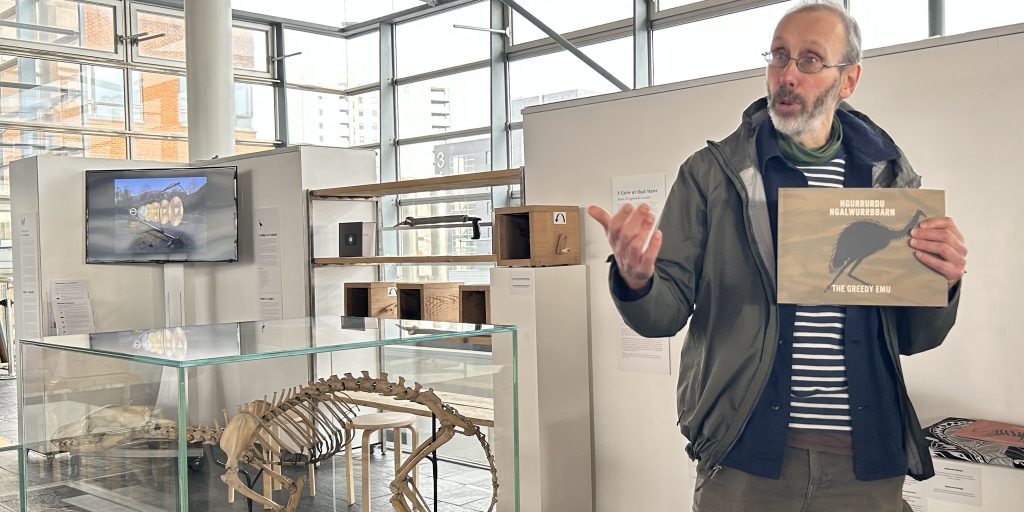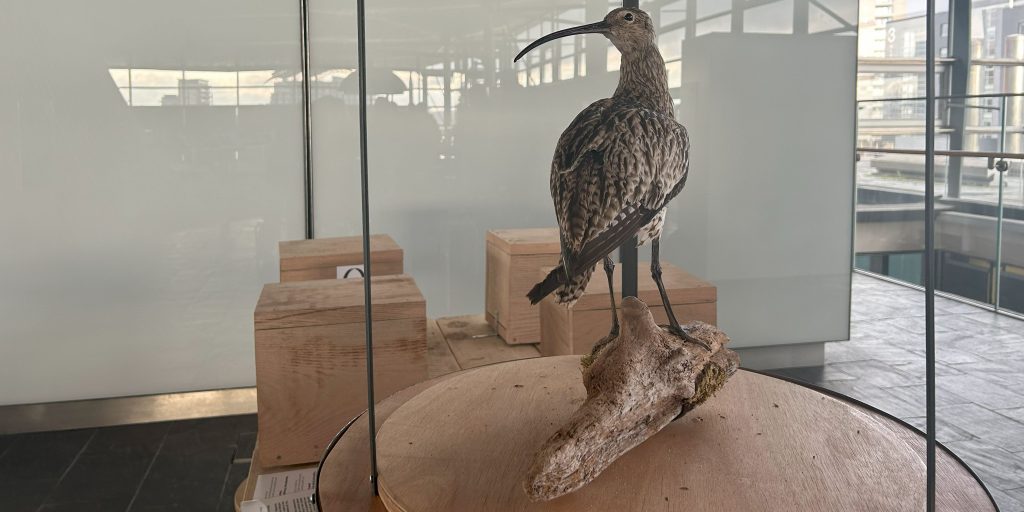Current exhibition uses art and animation to get people talking about conserving nature and protecting our wildlife

A Wales-based visual artist is using animation to raise awareness of the threats to a now rare species of bird.
Using art, Sean Harris, 56, brings two bird species, the curlew and the great auk, to life as part of the exhibition: The Conference of the Birds. He takes inspiration from the farming community in North Powys, an important curlew conservation area, where he lives.
Art is a way for him to get people together and start conversations, says the artist who has worked with the likes of the British Museum, the Smithsonian Institution, British Council and many more.
“I use paper cutouts to animate, and team work is a big part of animation. And so you can have two very different people actually coming together to bring the bird to life,” says the visual artist who has previously received the Creative Wales Ambassador Award in 2013.
“In the course of doing that, that’s when the best conversations happen; conversations that wouldn’t otherwise be had,” he says. Due to this project he had 70-year-old farmers and politicians animating cranes and curlews together, he adds, which was in his words “surreal”.
Choosing the Senedd as the location of this exhibition is a conscious choice by Harris, as he describes it as a place of debate and opposing opinions.
Llŷr Gruffydd, a Plaid Cymru politician and Member of Senedd says that every time he walks to the chamber there is always someone looking at the artwork.
The Conference of the Birds
The exhibition featuring Harris’ work is spread across two sites. The Senedd Oriel Gallery displays objects, specimens, and little animation machines, while the exhibit in the Pierhead Futures Gallery features an immersive experience with various movements and colour.
The great auk, one of the species the visitors can learn about, is now extinct. The last pair on earth had what Harris called an “iconic death,” strangled by specimen hunters in 1844. “Wider society didn’t understand the mechanism of extinction,” said Harris in a previous talk at the Senedd. He explained the great auk was the first bird species in the northern hemisphere that humankind “knowingly exterminated.”
The exhibition features the replica of the egg of the auk, while the real one, which is currently at the National Museum, was deemed too valuable to come to the Senedd. Visitors can also see an animation of the DNA sequence of the great auk that was extracted by Dr Jessica Thomas of Swansea University.
The other bird, the curlew, is a currently endangered species which the artist described as an “ambassador for an entire ecosystem.”

Fighting to save the curlew
The State of Nature 2023 Wales report is a landmark publication created by a coalition of wildlife organisations that shows the continued decline of Welsh species. The research shows that one in six species are at risk of extinction in Wales. The report assessed 220 bird species, of which, 27% are now red-listed compared to 12% in 2002.
“Where this all goes next is a question for people in the arts and in conservation, who decide ultimately if it has any value,” Harris adds.
Artist Sean Harris talks about his exhibition and the threat of extinction for the curlew.
The protection of the curlew remains one of the most important agendas for Welsh conservation groups, and a government fund has been designated to the Curlew Wales partnership, earlier this year.
The £1 million fund has aided in the launch of the Wales Action Plan for the Recovery of Curlew, a 10-year programme running from 2021-2031. The partnership includes four key members; Game and Wildlife Conservation Trust; the Clwydian Range and Dee Valley AONB; Curlew Country; and Brecon Beacons National Park, who are working together in 12 Important Curlew Areas (ICAs) across Wales to prevent the extinction of the Curlew in Wales.
Harris says while we decided not to save the great auk, what happens to the curlew is still uncertain. “We can turn this into a story of renewal. Of a renewed relationship with the natural world,” he says.
“What we have to find is not the perfect solution because that doesn’t exist. We have to find the best solution. And that can only happen through debate,” the artist concludes.

